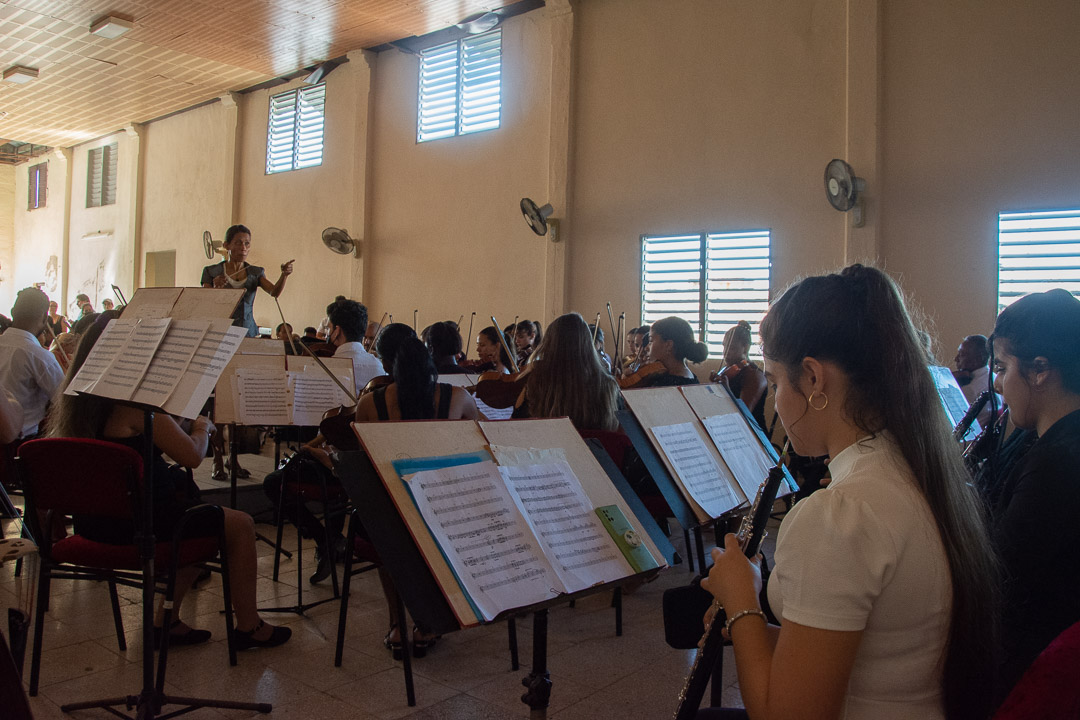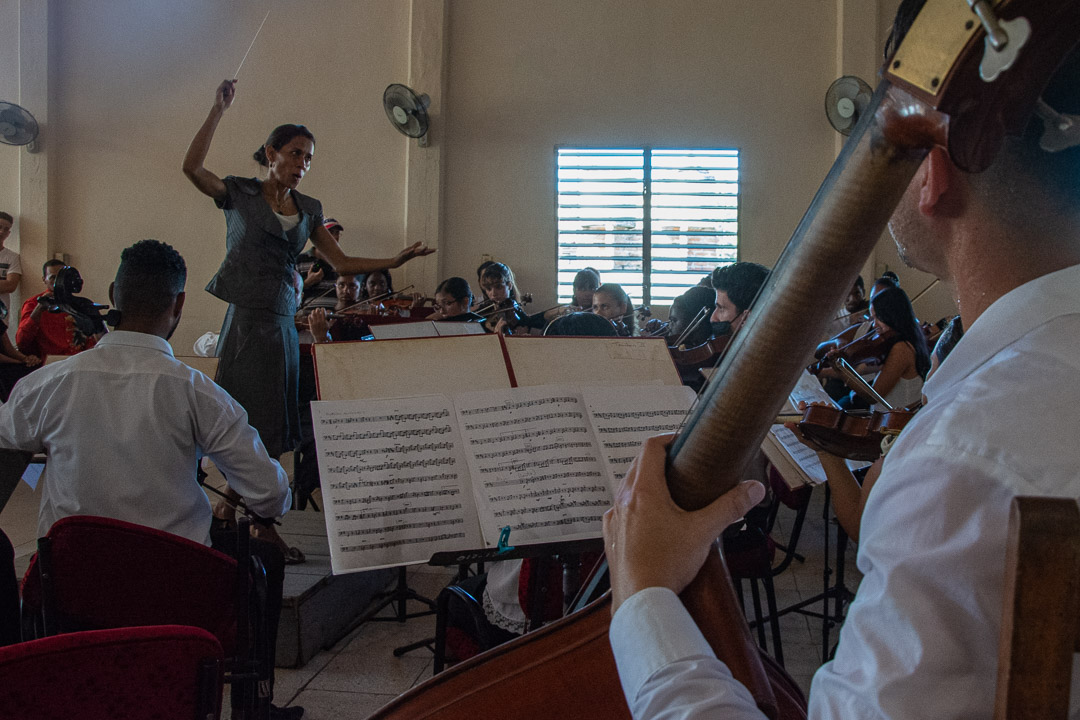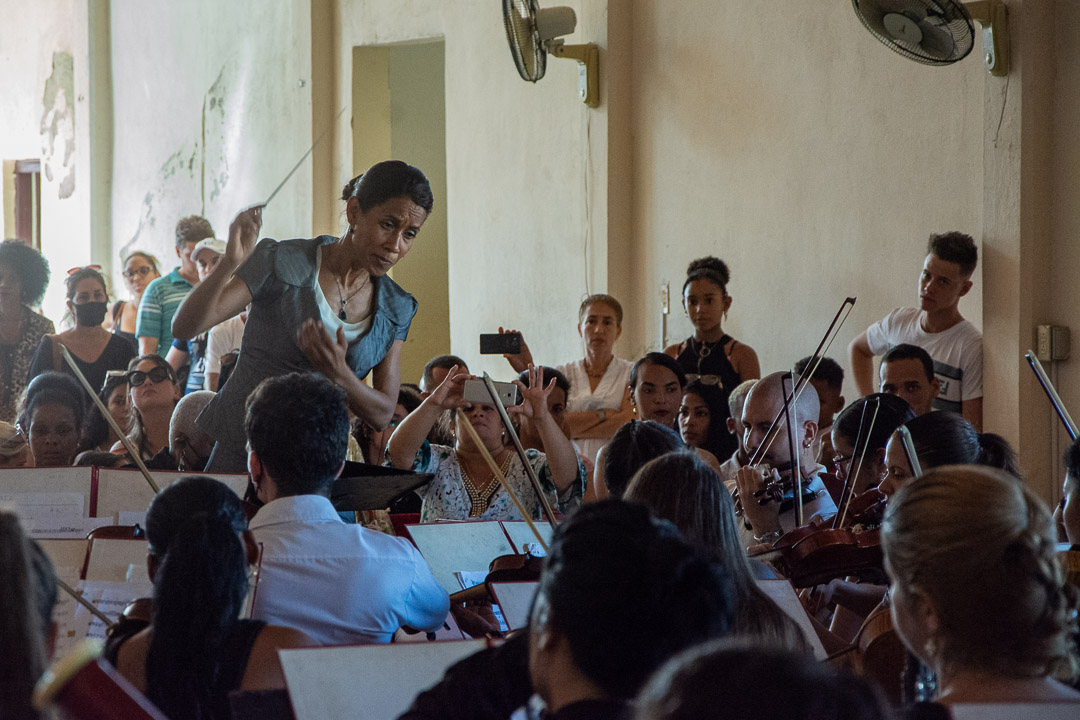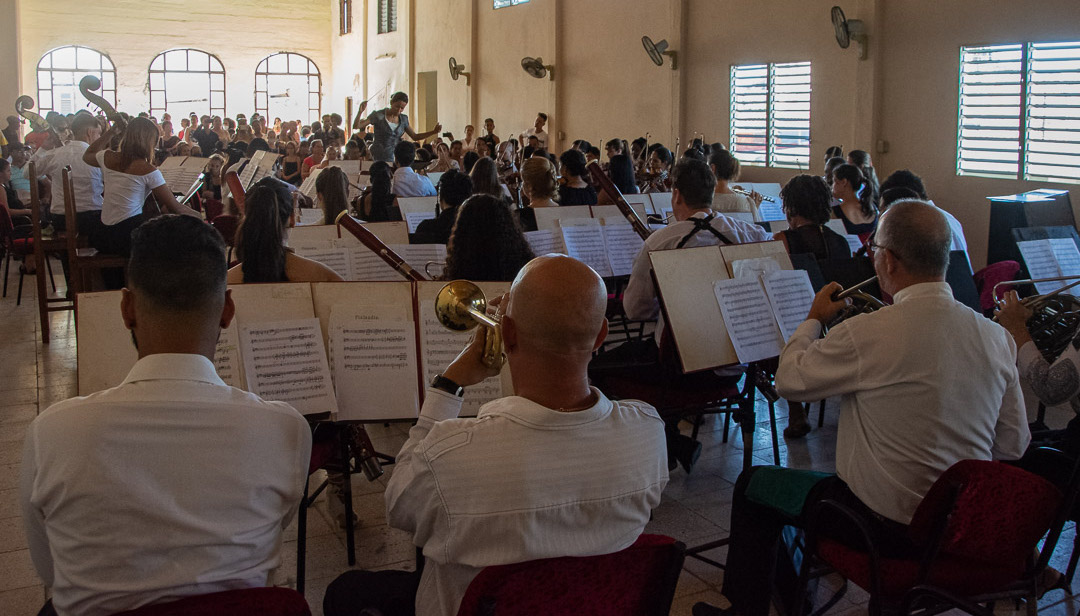CAMAGÜEY. –Only magic realism can be used to understand the scene at the headquarters of the Camagüey Symphony Orchestra.Hundreds of sweaty people, after a bad night, were there with fancy attires and the spirit of music ready to touch the mood.
“Big shower of orchestras” as LídiceCruzata would name this day of concerts for Cuban culture, which gathered at the same place four groups made up of students, professionals, or both.
The selection for the repertoire was along the lines of universal hymns, most of them in dialogue with the era in which they were composed, and with an incredible capacity to bring balance to mind and body in spite of the anxieties of everyday life.

Children from the Luis Casas Romero Vocational School of Art (EVA), directed by teacher Susana Pérez Williams opened the performance with Hymn to Joy, the most popular section of Ludwig van Beethoven's Ninth Symphony.
Before continuing with older students from the same school, teacher Susana commented on the advantages of the orchestra as part of the school subject Ensemble Practice.
This collective performance improves music reading, develops hearing and the ability to play something different. Later on, musicographer Verónica Fernández confirmed these benefits by praising the quality of the interpretation, even of the little ones who have only been learning their instrument for about two years.

After the initial Beethoven’s exhortation to play pleasant feelings, the second group of the EVA performed Vivaldi's Seasons. The sound connected different moods and feelings to bond with that sensation that music accomplishes with its intangible beauty.
Next was the orchestra of the Jose White Music Conservatory, led by Eduardo Campo; although, the performance of the First Movement of Schubert's Unfinished Symphony was under the direction of Dailenis Cruzata, a disciple of Guido López-Gavilán at the University of the Arts (ISA).
This piece has a halo of mystery because it was known by the public almost forty years after the composer’s death. Schubert, after the introductory bars, stimulates a pleasing listening to the sweetness of his singing.
The third group was represented by the ISA subsidiary with Finlandia, a symphonic poem by Sibelius, a portrait of his native country that evokes the landscape and the struggle for freedom.
According to Lídice Cruzata, a professor at that university, they are deepening the school subject Orchestral Repertoire during the monthly week of classes, especially for those who live in other eastern provinces of Cuba. The clarinetist Yaquelín Pancorbo and the concertmaster Manuel Señarís are part of the faculty.

The host Camagüey Symphony Orchestra closed the event, under the direction of its conductor Lídice, with a medley of works by José Marín Varona, an acclaimed figure here in his homeland for his merits and contributions to popular and concert music.
Javier del Toro was the master of the ceremony along with Verónica Fernández, an effusive interviewer of the conductors with a very brief but satisfactory conversation following each project.
As part of the narration, she shared data from the 19th and 20th centuries as antecedents or attempts to create a solid Symphony Orchestra, which was coinceived in 1961 by Jorge Luis Betancourt. It was confirmed by the testimony of his daughter Miriam Betancourt and musicians Roberto Campos and Pablo Vázquez, current director of the Juan Ramón Orol Chamber Orchestra.
The musicographer considered this "marathon" as an example of how much Cuban culture has done for the symphonic development, particularly in this province: "Today we have four symphonic orchestras".
This concert day took place on October 12th at the headquarters of the Provincial Concert Band and included a presentation at Larios Gallery, the usual venue for the Chamber Orchestra.
It was supported by the Provincial Center of Music and Performances, and the art education system guaranteed the participation of students from elementary, middle, and high levels, in schools with regional character and enrollment from almost all over Cuba.
Let's hope this shower favors the continuous convergence of talent, because of what it represents for a development of artists and the public, and all the good vibes that we can convey thanks to this exchange.
Translated by Claudia Quesada 3rd year English Language student
Reviewed by Linet Acuña Quilez



